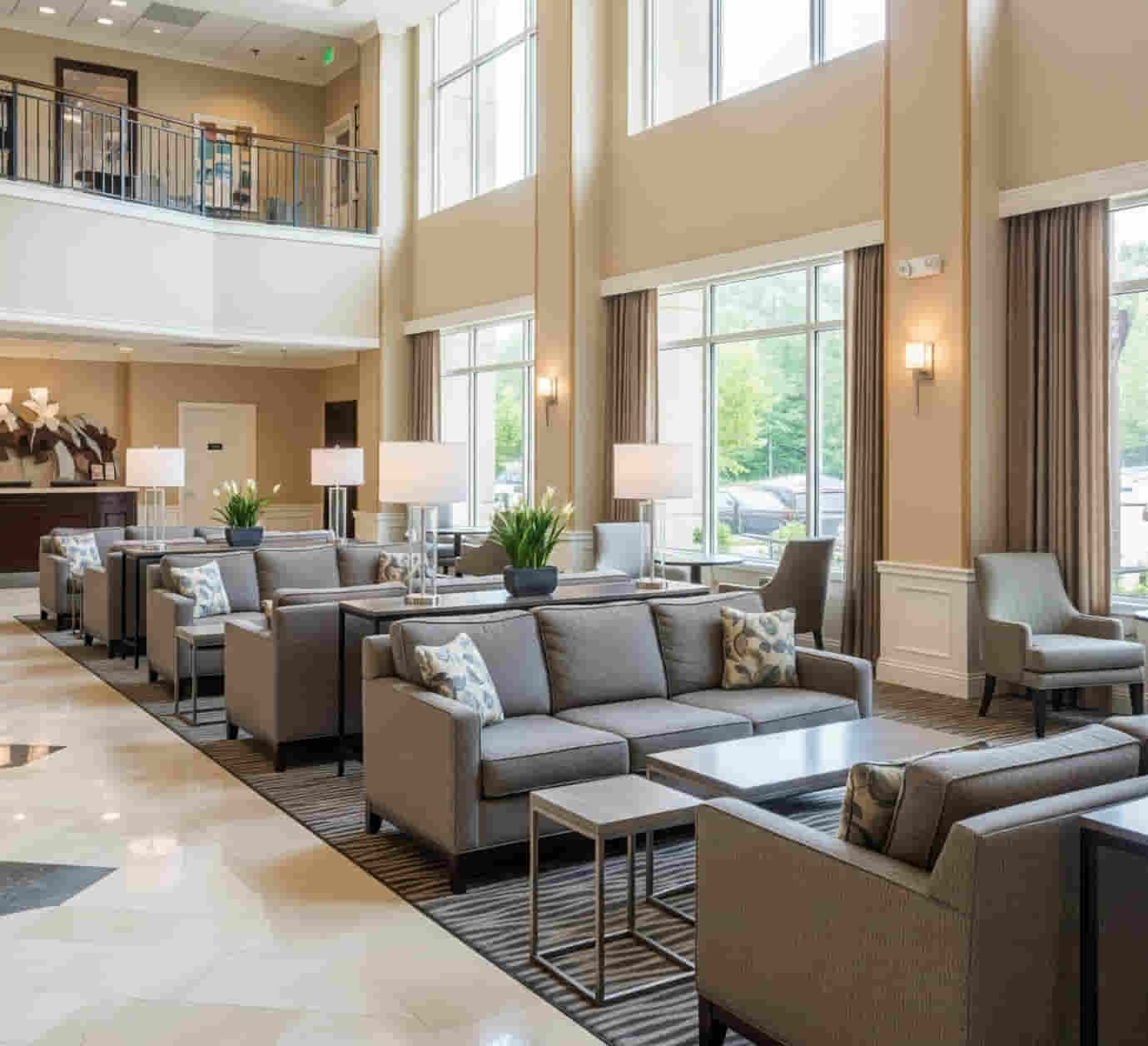How to Plan a Commercial Furniture Purchase for a New Hotel or Restaurant

Opening a new hotel or restaurant involves a host of moving parts, but few elements are as crucial—and sometimes overlooked—as commercial furniture planning. The right furniture does more than fill space; it shapes guest experience, reflects brand identity, and supports day-to-day operations. Conversely, poor planning can lead to costly delays, misaligned aesthetics, or furniture that falls short on durability and safety. For hospitality procurement professionals just beginning to navigate this terrain, understanding the foundational planning steps and supplier considerations is key to aligning furniture purchases with broader project goals.
In this overview, we explore the essential stages of commercial furniture procurement tailored to hotels, resorts, and boutique accommodations. Topics include why furniture matters in hospitality projects, how to identify reputable commercial furniture suppliers, timing procurement to fit construction schedules, important durability and compliance factors, and coordinating stakeholders to ensure smooth delivery and installation. This guide aims to provide a clear framework that supports confident decisions and helps avoid common pitfalls.
Understanding the Importance of Commercial Furniture in Hospitality Projects
Furniture plays a pivotal role in hospitality environments. Beyond aesthetics, it directly affects guest comfort, safety, and the operational flow of spaces. Commercial-grade furniture—designed to withstand high traffic and frequent use—is a significant investment that impacts both the guest experience and long-term maintenance costs. Selecting pieces that align with brand identity reinforces the property’s positioning, whether that’s luxury, boutique charm, or modern minimalism.
When furniture procurement is treated as an integral part of project planning rather than an afterthought, organizations often experience fewer delays and budget overruns. Poor planning can result in misaligned designs, last-minute vendor changes, or products that fail to meet fire safety and accessibility standards, all of which can disrupt opening schedules. Considering furniture early helps ensure quality, compliance, and timely delivery.
[ILLUSTRATIVE EXAMPLE]
Imagine a new boutique hotel aiming to create a cozy, upscale atmosphere. The design team specifies elegant seating with custom upholstery. However, if the procurement team waits too long to secure commercial furniture suppliers or overlooks durability specs, the final pieces may arrive late or require costly adjustments. This scenario highlights why coordination and early planning matter.
[END EXAMPLE]
Identifying and Selecting Reputable Commercial Furniture Suppliers
Choosing the right commercial furniture suppliers is foundational to successful procurement. Key qualifications often include industry experience in hospitality, proven compliance with relevant safety standards (such as US fire codes), and a track record of reliable delivery. Vendors specializing in hospitality understand the unique durability needs and regulatory requirements that general commercial suppliers may not fully address.
Critical questions for supplier evaluation include:
- What are typical lead times for orders and delivery?
- What warranty and post-sale support options are provided?
- Can suppliers accommodate customization to meet specific design or operational needs?
Supplier reputation can often be gauged through references within the hospitality sector or documented project histories. Prioritizing reliability and compliance reduces risks of project delays or furniture that doesn’t perform as required.
[ILLUSTRATIVE EXAMPLE]
A resort project team might shortlist commercial furniture suppliers with experience outfitting similar properties. One vendor offers detailed warranty terms and confirms that their products meet NFPA fire safety standards, while another has faster lead times but less clarity on compliance. Balancing these factors helps inform supplier selection aligned with project priorities.
[END EXAMPLE]
Planning Your Furniture Purchase Timeline
Coordinating furniture procurement with the overall construction and design schedule is essential. Furniture orders typically require significant lead times for manufacturing, shipping, and installation—often several months. Integrating these timelines into the project plan helps avoid last-minute rushes that can delay openings.
Allowing buffer periods for order processing, potential production delays, and on-site installation logistics provides flexibility. Collaboration between procurement, design, and operations teams during scheduling discussions helps align expectations and facilitates smoother project flow.
Understanding how furniture delivery fits into broader milestones—such as interior finishing and staff training—supports operational readiness at launch.
Initial Budgetary Planning
Budgeting is a primary driver in procurement decisions and ideally begins alongside early project planning. Common approaches include:
- Allocating a percentage of the total project cost to furniture procurement.
- Estimating cost based on the number of rooms, seats, or guest capacity.
- Considering quality of materials, degree of customization, order volume, and supplier brand reputation as key factors influencing budget.
- Setting aside contingency funds for unforeseen expenses related to delivery, installation, or last-minute adjustments.
Having a clear budget framework helps balance quality expectations with project financial parameters and supports more effective supplier discussions.
Key Furniture Specifications and Compliance Considerations
Commercial furniture used in hospitality settings must meet rigorous standards. These include:
- Durability: Materials and construction designed to withstand continuous use in high-traffic environments.
- Safety: Compliance with US fire safety codes (such as NFPA) ensures materials resist ignition and meet flame spread requirements.
- Accessibility: Furniture placement and design must support ADA compliance to provide accessible spaces for all guests.
- Material and Finish: Surfaces should be easy to clean, resistant to wear, and suitable for the expected environment (e.g., moisture-resistant finishes in restaurants).
These specifications directly impact furniture lifespan, maintenance costs, and guest safety, making early consideration critical.
Coordinating Stakeholders and Finalizing Orders
Furniture procurement in hospitality involves multiple stakeholders: design leads focus on aesthetics, procurement managers oversee vendor contracts and budgets, and operations directors ensure functionality supports daily workflows. Effective communication across these teams reduces misalignments.
Final checks before placing orders typically include verifying specification sheets, confirming delivery timelines, and ensuring all compliance requirements are documented. Managing delivery logistics and installation schedules carefully supports timely, damage-free setup.
For significant projects, factoring in time and budget for creating a mock-up room or area can be a valuable risk mitigation strategy. This allows testing furniture aesthetics, functionality, and durability in a real-world setting before committing to bulk orders.
+——————————————————————————————————-+
💡 Quick Takeaways
- [Furniture’s Role]: Commercial furniture significantly influences guest experience, brand identity, and operational efficiency in hospitality projects.
- [Supplier Selection]: Reliable commercial furniture suppliers with hospitality experience and clear compliance credentials reduce procurement risks.
- [Timeline & Budgeting]: Early timeline integration and initial budgetary planning help avoid delays and financial surprises in furniture procurement.
+——————————————————————————————————-+
Conclusion
Planning commercial furniture procurement for new hotels and restaurants requires deliberate consideration of supplier reliability, compliance standards, budgeting, and timing coordination. Treating furniture procurement as a strategic part of the overall project supports on-time openings and long-term operational success. Hospitality professionals often benefit from focusing on reputable commercial furniture suppliers who understand the unique demands of this sector. By aligning furniture choices with brand goals, regulatory requirements, and budget frameworks early in the process, organizations may reduce risks of delays and quality issues, ultimately enhancing the guest experience.
Frequently Asked Questions (FAQs)
Q: How far in advance should furniture procurement planning begin for new hospitality projects?
A: Generally, planning starts at least 6 to 9 months before project completion to accommodate manufacturing lead times and installation schedules.
Q: What are critical criteria when selecting commercial furniture suppliers for hotels or restaurants?
A: Important criteria include the supplier’s hospitality experience, compliance with fire safety and accessibility standards, delivery reliability, and product durability.
Frequently Unasked Questions (FUQs)
Q: How can furniture choices affect operational efficiency beyond aesthetics?
A: Durable, functional furniture can reduce maintenance needs and downtime, supporting smoother daily operations and cost control.
Q: What common pitfalls in furniture procurement planning often go overlooked?
A: Neglecting to align furniture orders with construction milestones, overlooking warranty terms, and insufficient communication between design, procurement, and operations teams are frequent challenges.








Leave a Reply